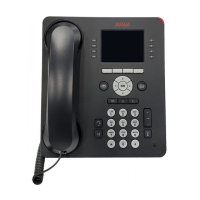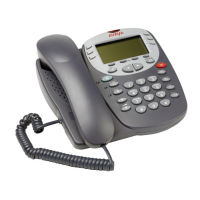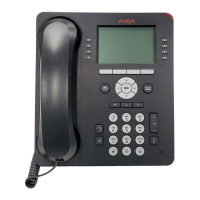Phone Based Administration Page 223
- Issue 6a (Thursday, February 22, 2018)IP Office Basic Edition
Comments on this document? infodev@avaya.com
Button Programming:
16.1 Button Programming Functions
·
Some functions are unique, ie. if already assigned to a button, assigning the function to another button will
automatically clear the setting from the existing button.
·
Some functions are only supported on buttons that include LEDs/LCD to indicate status. If programmed onto a
button without LEDs/LCD, the function may not work.
·
Intercom 1 means the first intercom or call appearance button. Intercom 2 means the second intercom or call
appearance button.
This function allows the user to set or clear an absent
message for display on their phone. When set, the absent
message is also displayed on other extensions when they
call the user.
This function allows the user to enter an account code prior
to making a call or during a call.
This function allows the user to answer a call on a
particular line. It can be used if the call is ringing, held or
already answered by another extension.
This function allows the user to make a call to another
specified extension. The button lamp will also indicate
when that other extension is in use.
This function allows the user to make a call using a number
stored by the button. The number can be an internal
number, an external number, an account code or any other
number. The button can then be used when a number of
that type needs to be dialed.
This function allows the user to switch call coverage for
their extension on or off. The button settings include the
extension number of the extension providing coverage.
When on, calls to the user that ring unanswered for the
user's number of coverage rings then also start ringing
at the call coverage extensions.
This function allows the user to view the phone system's
call log of all caller IDs of calls received by the system. To
use the button the user must be one of the three
extensions configured for call ID logging .
This function allows the user to redirect all their calls to
another number. Extensions with Remote Call
Forwarding enabled can also forward calls externally by
specifying a personal speed dial as the destination.
This function allows the user to pickup a call alerting at a
specified extension. Separate buttons can be created for
each extension for which call pickup is required.
This function allows the user to see the caller ID of a call
on another line without interrupting the current call to
which they are connected.
This function allows the user to swap the display of caller
ID name and number information on their extension.
This function allows the user to call or page the calling
group represented by the button.
This function is used to enable or disable call screening.
While enabled, when a caller is presented to the user's
voicemail mailbox, if the user's phone is idle they will hear
through the phone's handsfree speaker the caller leaving
the message and can select to answer or ignore the call.
This function allows the user to drop a call from a
conference.
226
228
230
232
234
236
199
244
147
238
112
141
240
242
246
248
183
250
252

